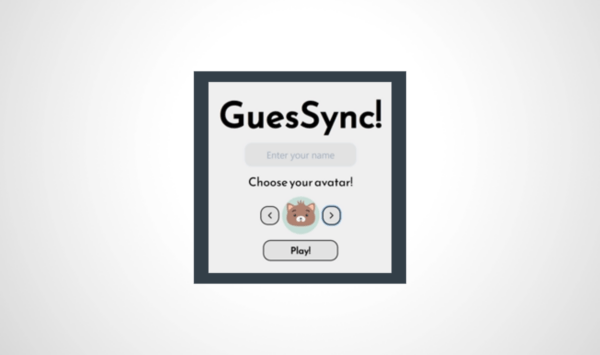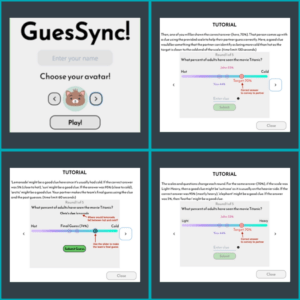
Political polarization has been a dominant issue over the last decade and the increasing hostility between members of opposing political parties poses a threat to democracy. Since research shows that some of this polarization stems from misperceptions about the opposing parties’ views, finding ways to correct these impressions can help bridge the divide.
New research from the Center for Media Engagement’s Ashwin Rajadesingan and University of Michigan researchers Daniel Choo, Jessica Zhang, Mia Inakage, Ceren Budak, and Paul Resnick explores whether an online guessing game that includes questions about political issues can help address people’s misperceptions about the other side. The results show that while playing the game doesn’t reduce negative attitudes toward people from the opposing political party, it does make them more willing to talk to each other about political issues. Given the findings, the game could be useful for local government and community organizations looking to offset political confrontations at public meetings or events.
Study Details
Game Design
GuesSync! is an online, two-player game where players are randomly matched and work together to guess answers to questions over multiple rounds. Players are asked to independently guess their answer at the beginning of each round. Then, the game assigns one player as the clue-giver and the other as the guesser and they play together to find the correct answer. Since the game revolves around giving clues, players do not need to know the answers to enjoy playing it. After five rounds where players trade off as clue-giver and guesser, they are shown a summary of the points they scored as well as each question and correct answer. Players are also able to chat with their teammate before and after each round. The game is now available to the public (since it’s new and there aren’t as many players to randomly match up, we recommend grabbing a friend and testing it out).
Study Design
In the research experiment, participants played one of three versions of the game: a control version with no political questions, a mixed version that had some political questions, and a fully political version with political questions in all rounds of the game.
Examples of Nonpolitical Questions:
- What percent of adults have seen the movie Titanic?
- What percent of adults say they would like to bring back dinosaurs?
- What percent of adults say that chocolate glazed donuts are their favorite donuts?
- What percent of adults in a relationship met their partner online?
Examples of Political Questions:
- What percent of Democrats believe that climate change has been mostly due to human activity?
- What percent of Republicans support requiring background checks for gun purchases at gun shows or private sales?
- What percent of Democrats support the death penalty for convicted murderers?
- What percent of Republicans say that the U.S. spends too much on alternative energy sources?
Questions related to politics were worded in ways that avoided giving cues that could motivate partisan reasoning and bias. The questions were selected based on the policy issues that Republican and Democratic participants considered to be most important but that they had the highest levels of misperception about when surveyed. To increase the credibility of the answers, sources were noted as nonpartisan (e.g., Gallup and YouGov) at the beginning of the tutorial and during the game summary.
After the game, participants answered a survey that gauged, among other polarization measures, players’ willingness to talk to someone from the opposing political party. The survey also collected game experience-related measures.
Results
Playing the political versions of the game improved people’s willingness to discuss political issues with those who have opposing views. Players also rated political versions of the game as just as fun to play as the nonpolitical version.
The game did not, however, reduce negative attitudes toward members of the opposing political party. Interestingly, Democrats did have warmer feelings toward Republicans after playing the game, but the same was not true for Republicans’ feelings toward Democrats. This may be due to the choice of game questions that could have affected the different ways Republicans and Democrats experienced the game.
Takeaways
GuesSync! presents a unique opportunity to help bridge divides between people with opposing political views. The game can be used to engage people in public settings in a way that might offset political confrontations. For example, it could be played as an ice-breaker activity at local community meetings or at events where participants will engage with opposing partisans on important issues. Given this, newsrooms could help spread the word about the game within their communities, perhaps focusing on the benefits to local government and community organizations. While there may be concerns about trivializing political issues through this format, the game offers a fun way to bring people together without overtly presenting itself as related to politics.



